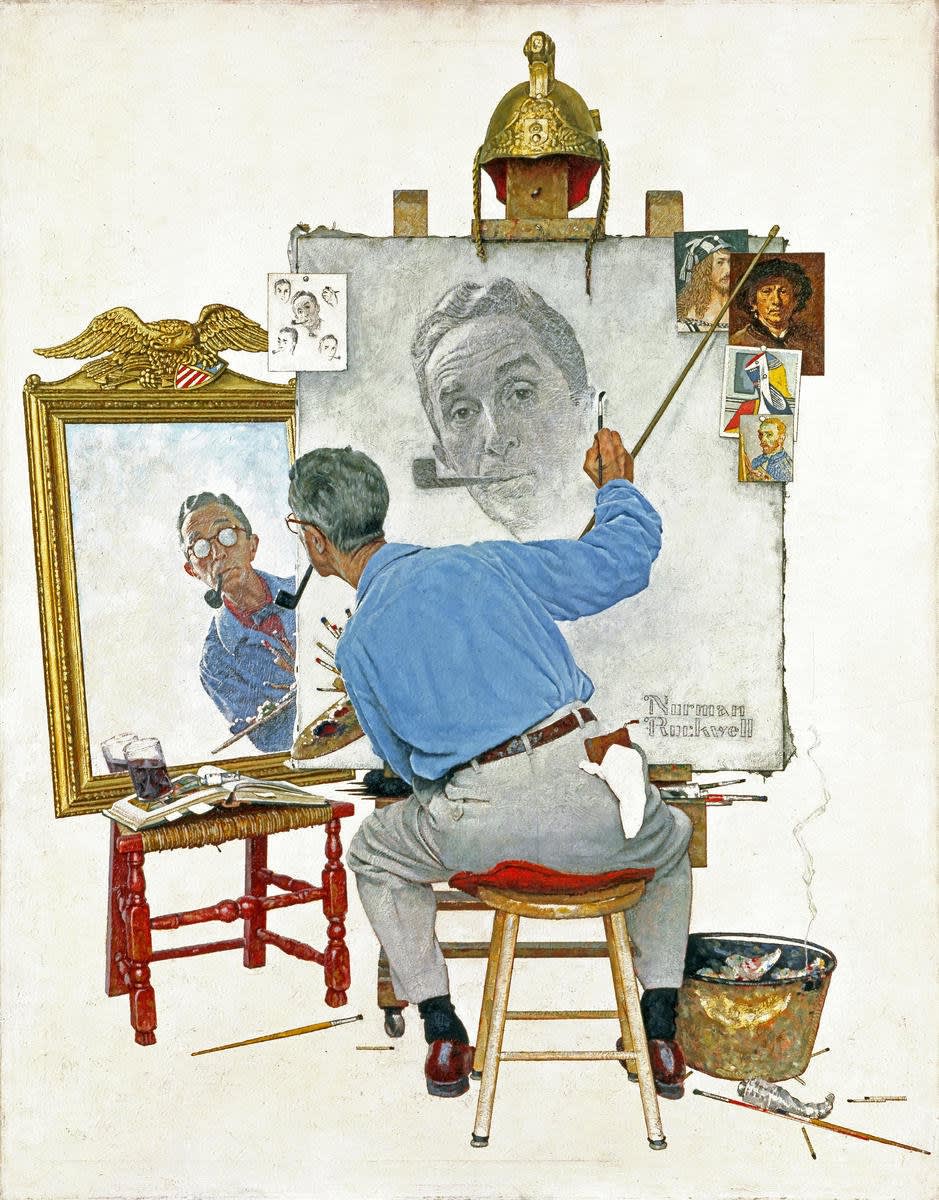The images that Norman Rockwell painted are ubiquitous in American culture. They appear on mugs, plates and on the walls of homes, restaurants and businesses, but are not often seen in museums and galleries. Many of his paintings and drawings can be found at the Norman Rockwell Museum, some at the Smithsonian and others in the collections of filmmakers George Lucas and Steven Spielberg.
Norman Rockwell Originals Destroyed or Discarded
In 1943, a fire in his studio destroyed all of the work stored there, as well as costumes and props that he had collected over the years. Also destroyed was his collection of pipes. Rockwell said that he may have dropped an ash from his pipe onto a chair that sat under the light switch when he turned off the lights to leave the studio that night. Friends who visited him at the studio said that he had a habit of lighting his pipe and then tossing the match into a large iron pot in which he stored his turpentine rags.
Even before the fire, Rockwell discarded some of his own original oils and sketches. He would send a painting to the Saturday Evening Post to be used for a cover and, when it was returned, he would rip the canvas off the frame, toss it away and stretch a new piece of canvas onto the frame for the next painting.
When a fan wrote to him, asking if she could buy some of his original work, he called her, “the crazy woman from Chicago” and charged her $100 a piece for seven canvasses. The “crazy woman’s” family sold the paintings in the 1990s for $17 million.
The Artist or Illustrator Debate
During the early twentieth century, illustrators, meaning those artists who were employed to produce work for commercial ventures, were revered and respected. Maxfield Parrish, Sidney Herbert Sime, and so many others, produced very fine works.
Although the public did not get to see the originals, the works were so richly done that they translated well to print in books, magazines and advertisements. Illustrators, like Rockwell, had public support, but no accolades from the art world.
“No man with a conscience can just bat out illustrations.” Rockwell wrote, “He’s got to put all of his talent and all of his feelings into them. If illustration is not considered art, then that’s something that we have brought upon ourselves; not considering ourselves as artists. I believe illustrators should say, ‘I’m not just an illustrator. I’m an artist.”
In 1969, when he was 74, Rockwell was given a solo exhibit at the Dannenberg Gallery in New York. The show was a success and every piece was sold before the show opened, but not a single art critic attended. “I can take a lot of pats on the back. I love it when I get admiring letters from people.” he said. “And, of course, I’d love it if the critics would notice me, too.”
Norman Rockwell was trained at the National Academy of Design and the Art Students League. He began his art career at age 16. The humor and lightness of much of his work often belies his masterly talent. Paintings like Rosie the Riveter, which was based on Michelangelo’s Prophet Isaiah on the Sistine Chapel ceiling and A Good Sign All Over the World, created for Boys’ Life magazine, are the works of a skilled artist.
Please contact us if you would like more information about Norman Rockwell’s original study for A Good Sign All Over the World, available at the Surovek Gallery.




